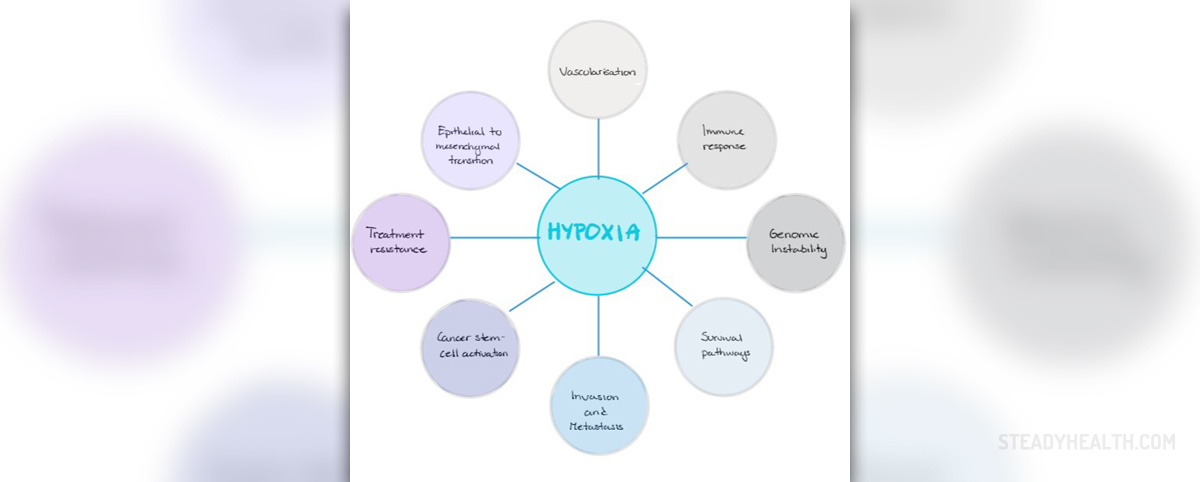
Hypoxia Overview
Hypoxia is a lack of the oxygen. This condition can develop in numerous diseases. The major problem of hypoxia is insufficient amount of oxygen in blood, consequent improper supply of the tissues with oxygen and in case that the insufficiency lasts long enough the affected tissue starts to deteriorate. The brain is most susceptible to lack of oxygen and is always the first organ which deteriorats if there is not enough oxygen in the blood. There is a variety of causes that lead to hypoxia. Certain heart conditions, poisoning, choking and strangulation are only some of them.
Symptoms of Hypoxia
This condition is followed by intensive headaches, cyanosis, difficulties with breathing such as shortness of breath and exhaustion. A patient may complain about nausea and there are even cases of coma and lethal outcome. The symptoms vary drastically depending on the degree of hypoxia and general health of the patients.
Causes of Hypoxia
Hypoxia occurs in heart attacks, asthma and pulmonary embolism. Severe head trauma can be also accompanied by hypoxia. Poisoning with certain chemicals and fumes, especially carbon monoxide poisoning, leads to drastic fall in saturation of oxygen. Suffocation and choking also prevent oxygen from entering the body.
Hypoxia can be hypoxic, anemic, hypemic, histotoxic and stagnant. Hypoxic hypoxia develops due to improper supply of oxygen. It is present in altitude ascension, sleep apnea and heart failure. Anemic hypoxia is a consequence of insufficient production of red blood cells that are in charge with transport of oxygen in the body. Hypemic hypoxia is caused by obstruction and inability for oxygen to be administered. Carbon monoxide poisoning is only one example of hypemic hypoxia. Histotoxic hypoxia develops when transferred oxygen cannot enter the cells. And finally, in stagnant hypoxia the blood is well supplied with oxygen but it cannot be transferred to all tissues.
Treatment of Hypoxia
The treatment of hypoxia depends on the intensity of the symptoms and the underlying cause. There are several treatment modalities. The basic principle is to provide with proper supply of oxygen by using oxygen masks. After the underlying cause is found the treatment of this condition can result in better supply with oxygen. Monitoring of hypoxic patients is essential. Apart from oxygen they most commonly need additional therapy which is easily administered intravenously. Fatigue and lightheadedness can lead to falls and this is why these patients need to stay in bed.
Some forms of hypoxia can be prevented. Altitude related hypoxia can be prevented if a person prepares and become accustomed to the height gradually.

















Your thoughts on this
Loading...